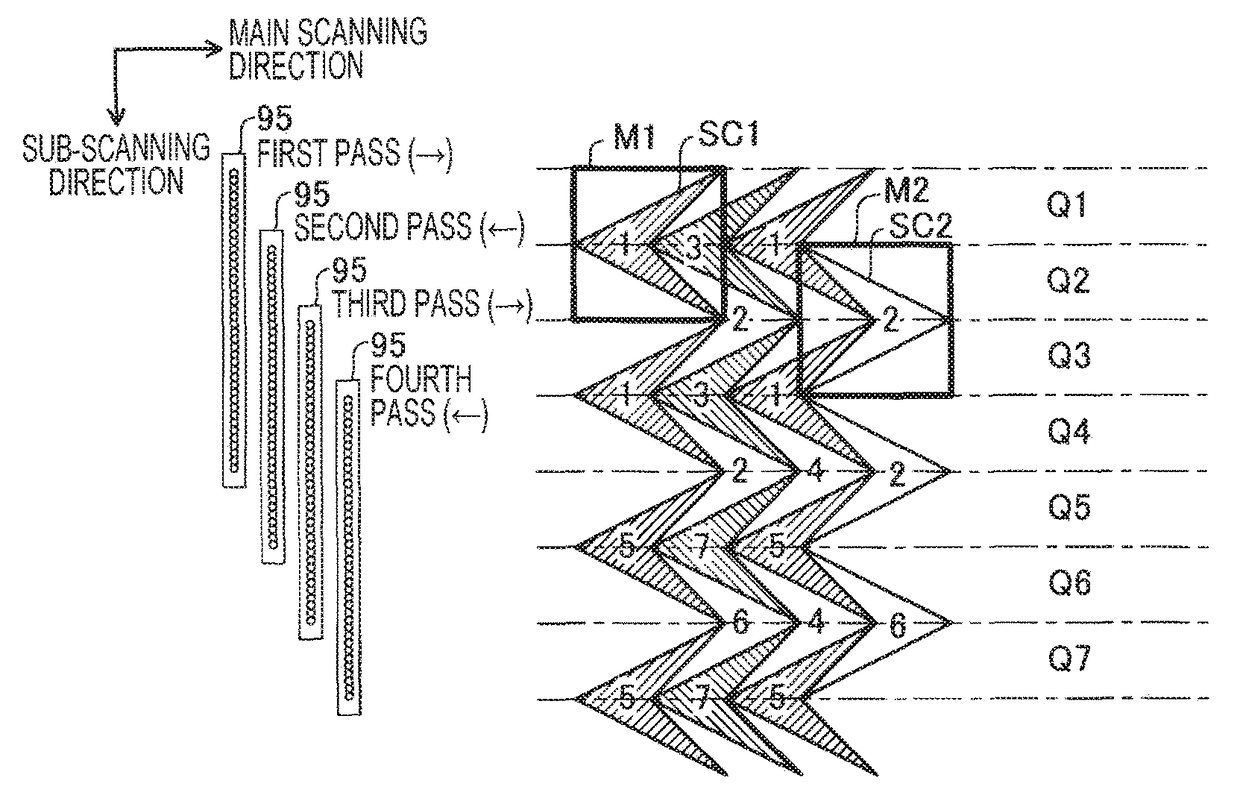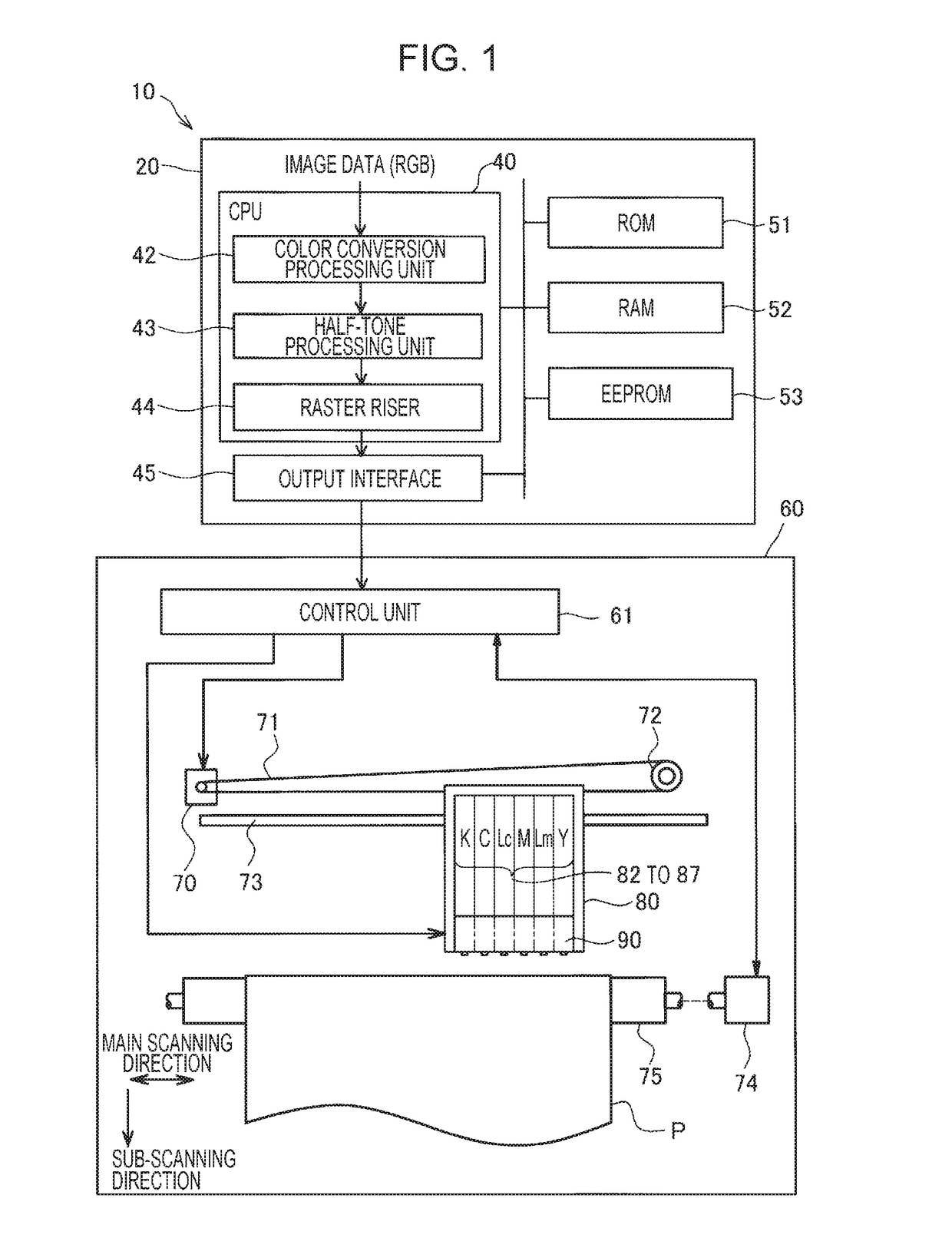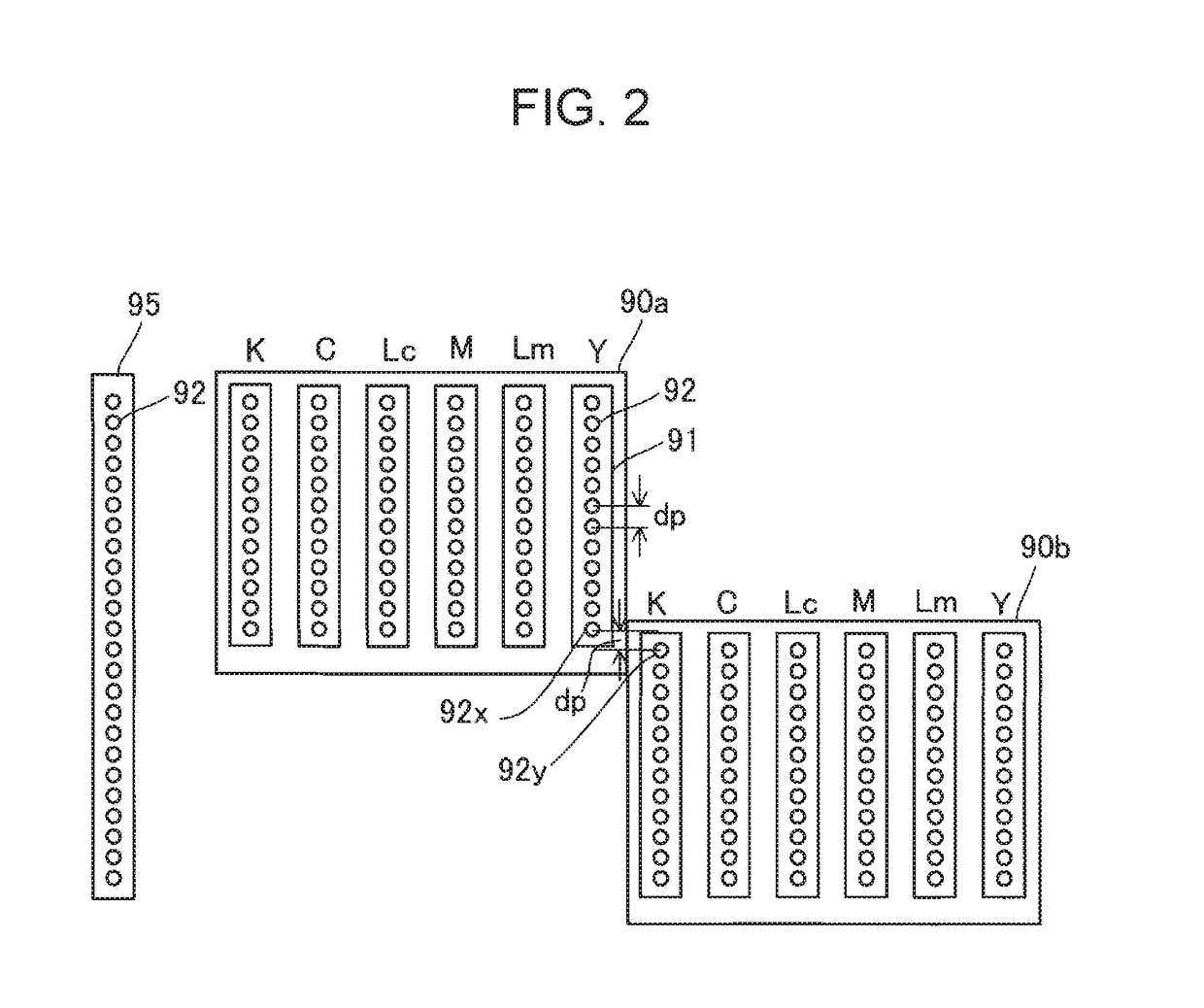Dot recording apparatus, dot recording method, computer program therefor, and method of manufacturing recording medium
a recording method and recording method technology, applied in the direction of matrix printers, visual presentations, instruments, etc., can solve the problem of easy to spot color streaks, and achieve the effect of reducing memory requirements
- Summary
- Abstract
- Description
- Claims
- Application Information
AI Technical Summary
Benefits of technology
Problems solved by technology
Method used
Image
Examples
first embodiment
[0024]FIG. 1 is an explanatory view illustrating a configuration of a dot recording system 10. The dot recording system 10 includes an image processing unit 20 and a dot recording unit 60. The image processing unit 20 generates recording data for the dot recording unit 60 from image data (for example, image data of RGB).
[0025]The image processing unit 20 includes a CPU 40 (referred to as a “controller 40”), a ROM 51, a RAM 52, an EEPROM 53, and an output interface 45. The CPU 40 has functions of a color conversion processing unit 42, a half-tone processing unit 43, and a raster riser 44. These functions are realized by a computer program. The color conversion processing unit 42 converts multi-tone RGB data of image into ink amount data that represents the amount of ink in plural colors of ink. The half-tone processing unit 43 creates dot data that represents a dot formed state for every pixel by performing half-tone processing on the ink amount data. The raster riser 44 sorts the do...
second embodiment
[0044]FIGS. 7A to 7C are explanatory views illustrating a dot recording pattern and a mask for creating the dot recording pattern in a second embodiment. In the second embodiment, shapes of the supercell regions SC1 and SC2 are concave polygon shapes, and the second embodiment is different from the first embodiment in that dots are recorded in four passes (hereinafter, referred to as “four pass”) with respect to the first embodiment where dots are recorded in two passes (hereinafter, referred to as “two pass”).
[0045]FIG. 7A illustrates positions of a recording head 90 and regions that are recorded in each pass in the first pass to the fourth pass. Numbers illustrated in FIG. 7A represent an order of a pass, as 1 is the first pass and 2 is the second pass. In addition, regions recorded in the odd-numbered passes are hatched, and regions recorded in the even-numbered passes are not hatched. A part of regions Q1 to Q4 are recorded in the first pass, a part of regions Q2 to Q5 are recor...
third embodiment
[0053]FIGS. 9A to 9C are explanatory views illustrating a dot recording pattern and a mask for creating the dot recording pattern according to a third embodiment. The third embodiment uses a common mask used in the second embodiment, but is different from the second embodiment in that it is performed in the second pass. FIG. 9A illustrates positions of the nozzle array 95 and regions recorded in each pass from the first pass to the fourth pass. Numbers of FIG. 9A represent an order of passes, and regions recorded in the odd-numbered passes are hatched, and regions recorded in the even-numbered passes are not hatched. A part of regions Q1 and Q2 are recorded in the first pass, a part of regions Q2 and Q3 are recorded in the second pass, a part of regions Q3 and Q4 are recorded in the third pass, and a part of regions Q4 and Q5 are recorded in the fourth pass.
[0054]A shape of the mask M1 in the third embodiment has a shape in which dots of a recording start portion are added to a reco...
PUM
 Login to View More
Login to View More Abstract
Description
Claims
Application Information
 Login to View More
Login to View More - R&D
- Intellectual Property
- Life Sciences
- Materials
- Tech Scout
- Unparalleled Data Quality
- Higher Quality Content
- 60% Fewer Hallucinations
Browse by: Latest US Patents, China's latest patents, Technical Efficacy Thesaurus, Application Domain, Technology Topic, Popular Technical Reports.
© 2025 PatSnap. All rights reserved.Legal|Privacy policy|Modern Slavery Act Transparency Statement|Sitemap|About US| Contact US: help@patsnap.com



